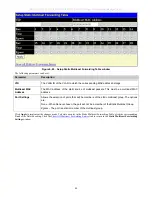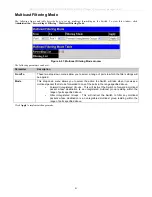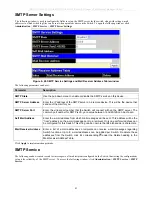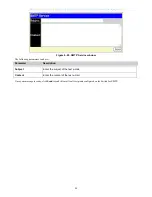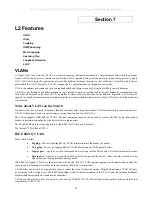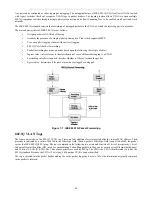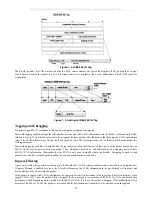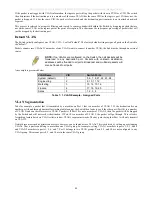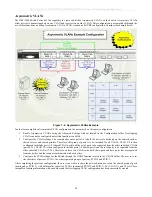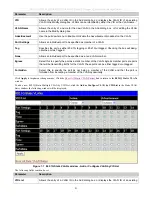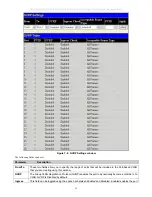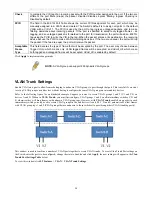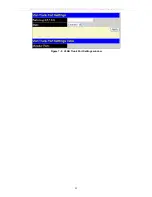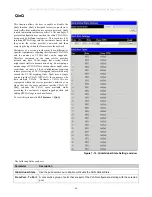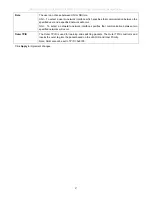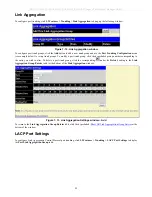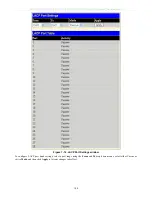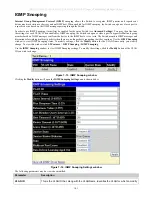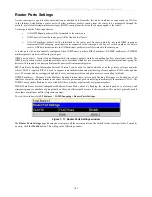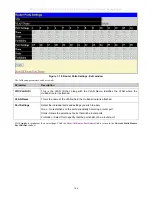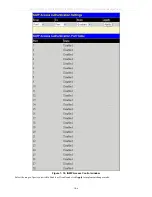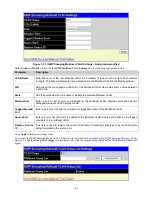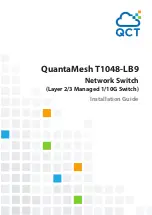
DES-3028 DES-3028P DES-3028G DES-3052 DES-3052P Layer 2 Fast Ethernet Managed Switch
Check
to compare the VID tag of an incoming packet with the PVID number assigned to the port. If the two are
different, the port filters (drops) the packet.
Disabled
disables ingress filtering. Ingress Checking is
Disabled
by default.
PVID
The field in the 802.1Q Port Table shows the current PVID assignment for each port, which may be
manually assigned to a VLAN when created. The Switch's default is to assign all ports to the default
VLAN with a VID of 1. The PVID is used by the port to tag ingress, untagged packets, and to make
filtering decisions about incoming packets. If the port is specified to accept only tagged frames - as
tagging, and an untagged packet is forwarded to the port for transmission, the port will add an 802.1Q
tag using the PVID to write the VID in the tag. When the packet arrives at its destination, the receiving
device will use the PVID to make VLAN forwarding decisions. If the two are unequal, the port will drop
the packet. If the two are equal, the port will receive the packet.
Acceptable
Frame
Type
This field denotes the type of frame that will be accepted by the port. The user may choose between
Tagged Only
, which means only VLAN tagged frames will be accepted, and
Admit_All
, which mean
both tagged and untagged frames will be accepted.
Admit_All
is enabled by default.
Click
Apply
to implement changes made.
NOTE:
A VLAN group can support 255 dynamic VLAN groups.
VLAN Trunk Settings
Enable VLAN on a port to allow frames belonging to unknown VLAN groups to pass through that port. This is useful if you want
to set up VLAN groups on end devices without having to configure the same VLAN groups on intermediary devices.
Refer to the following figure for an illustrated example. Suppose you want to create VLAN groups 1 and 2 (V1 and V2) on
devices A and B. Without a
VLAN Trunk
, you must first configure VLAN groups 1 and 2 on all intermediary switches C, D and
E; otherwise they will drop frames with unknown VLAN group tags. However, with
VLAN Trunk
enabled on a port(s) in each
intermediary switch you only need to create VLAN groups in the end devices (A and B). C, D and E automatically allow frames
with VLAN group tags 1 and 2 (VLAN groups that are unknown to those switches) to pass through their VLAN trunking port(s).
This window is used to combine a number of VLAN ports together to create VLAN trunks. To create Vlan Trunk Port settings on
the Switch, enter the ports to be configured, change the state to
Enabled
and click
Apply
, the new settings will appear in the
Vlan
Trunk Port Settings Table
below.
To view this window click
L2 Features
>
VLAN
>
VLAN Trunk Settings
.
94
Summary of Contents for DES-3028
Page 306: ......
Page 307: ......
Page 327: ...D Link D Link D Link D Link 7 495 744 00 99 http www dlink ru e mail support dlink ru...
Page 332: ...Technical Support Web Web URL http www dlink jp com...

